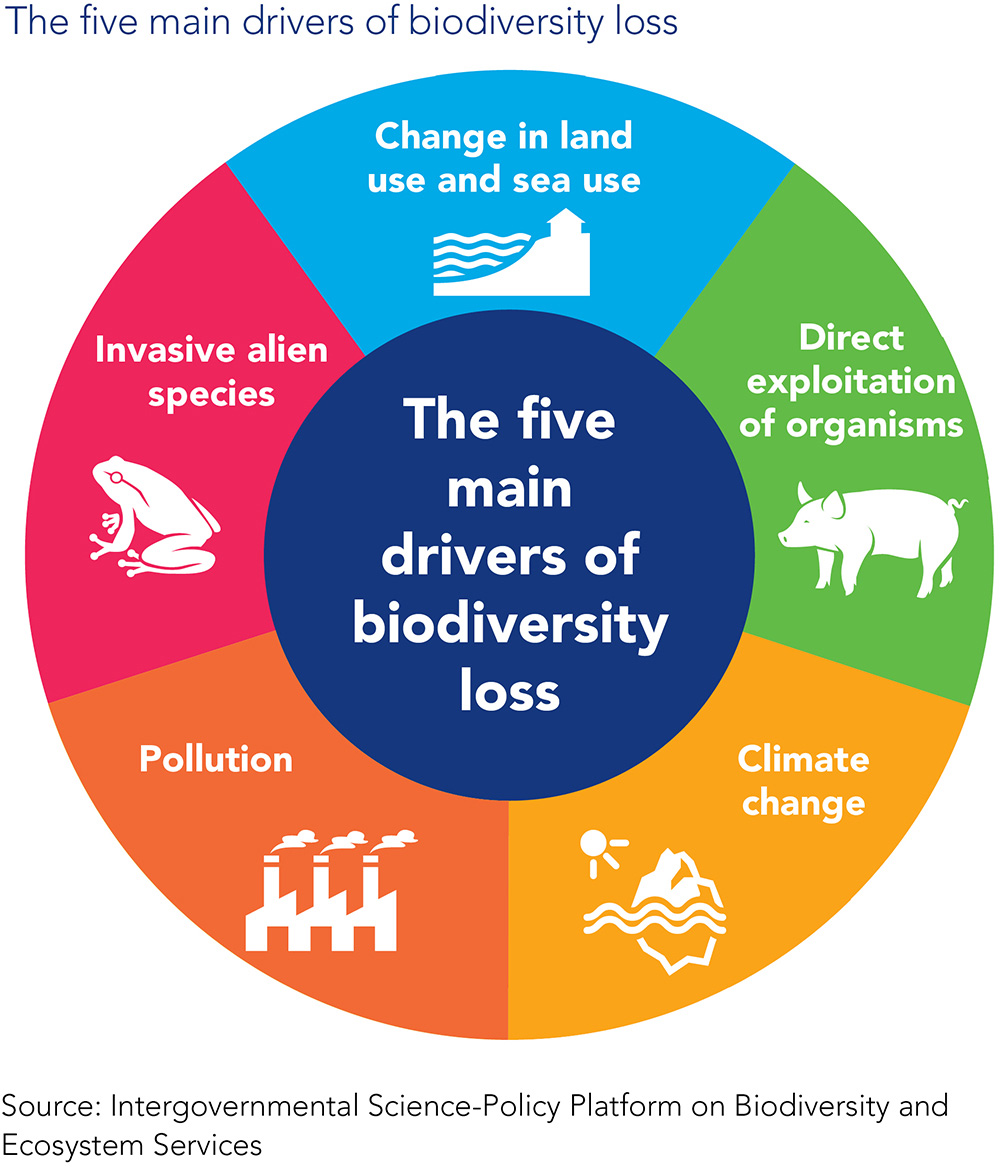Fast Reading
- Global Biodiversity Framework includes four goals for 2050 and 23 targets.
- We advocated for the framework to require the alignment of public and private financial flows with biodiversity goals and targets.
- To support the implementation of the GBF, companies must reduce their contribution to the five main drivers of biodiversity loss.
Hopes were high when COP15 went ahead in a frosty Montreal in December 2022, after multiple pandemic-induced delays. The conference was regarded as a unique opportunity to transform our relationship with nature and reverse a long trajectory of decline.
Although at times it looked as if an agreement might not be reached, COP15 ended with the adoption of the Kunming-Montreal Global Biodiversity Framework (GBF). While the negotiations and agreement are between countries, there was unprecedented attendance and attention from businesses and financial institutions. The first ever Finance and Biodiversity Day took place, as well as numerous side events focused on driving urgent action from across the private sector.
The GBF features four goals for 2050 and 23 action-oriented targets to stimulate action up to 2030. Highlights include a commitment to effectively conserve and manage at least 30% of land and oceans, versus current levels of approximately 17% and 8% respectively protected. There is also a commitment to restore at least 30% of degraded ecosystems. There are targets to halve global food waste, address the risk from pesticides and highly hazardous chemicals, and implement nature-based solutions to align climate and biodiversity action. Important finance-related targets for 2030 include phasing out or reforming subsidies that are harmful to biodiversity by at least US$500bn per annum (Target 18) and mobilising at least $200bn annually from public and private sources for biodiversity-related funding (Target 19).
The reaction to the Kunming-Montreal agreement has been broadly positive, although some experts have pointed to the need for more numerical targets and specificity in some areas. The Aichi targets that were in place from 2010 to 2020 were almost completely missed. However, with greater awareness of the systemic risk posed by biodiversity loss, it is likely that there will be heightened scrutiny for the newly agreed framework.
Our activities at COP15
Federated Hermes Limited (FHL) was at COP15 as part of the Finance for Biodiversity Foundation delegation. We actively participated in COP15 in our capacity as co-chair of the Public Policy Advocacy working group within the Foundation. For a year and a half leading up to COP15, the Public Policy Advocacy working group followed the negotiations, engaged bilaterally with member states, and provided suggestions for the draft text. We developed three position papers (one, two, three) ahead of each round of negotiations to explain the position and rationale behind the text suggestions.
The core goal was to ensure that the GBF captures and emphasises the important role that the private finance sector must play in halting and reversing biodiversity loss. We advocated for the framework to require the alignment of public and private financial flows with biodiversity goals and targets. Similar to article 2.1c in the Paris Agreement, which called for financial flows to be consistent, this language signals the need for financial institutions to reduce financial flows that are currently harming biodiversity, and increase financial flows that can support nature protection and restoration, especially through stewardship and capital allocation.
Implications for investors and engagement
We are pleased that the parts of the framework that reference private finance closely mirror the position we advocated for through the Finance for Biodiversity Foundation. Goal D and Target 14 require the alignment of financial flows with both the 2030 targets and the 2050 vision, which secures a focus on implementation in the short, medium and long term.
Target 15 requires governments to ensure that large companies and financial institutions assess and disclose their risks, impacts and dependencies on biodiversity throughout their operations, value chains and portfolios. This closely reflects the expectation we set in our white paper, Our Commitment to Nature, for companies to assess, measure and disclose their impacts and dependencies on nature throughout their operations and supply chains. The Taskforce on Nature-related Financial Disclosures (TNFD) framework is due to be completed in the third quarter of 2023, which will enable companies and financial institutions to produce more standardised and relevant nature-related disclosure.
The GBF references numerous other areas that are relevant to companies and investors, which will support our ongoing engagement efforts on topics such as deforestation, climate change and the circular economy. The framework also recognises the important role of Indigenous communities. To support the implementation of the GBF, companies must continue to reduce their contribution to the five main drivers of biodiversity loss: land and sea use change, direct exploitation of species, climate change, pollution, and invasive alien species.

The Kunming-Montreal agreement is an important step and signals hope for nature, but it is just the starting point. All eyes must now turn towards effective implementation of the GBF at the national level. Countries are required to submit their National Biodiversity Strategies and Action Plans (NBSAPs) ahead of COP16, which will take place in Turkey in 2024. All stakeholders, including the financial sector, have a significant amount of work to do to successfully implement the full scope of GBF goals and targets. Building on the outcome of COP15, we will continue to focus our engagement and advocacy activities on how companies and governments can effectively contribute to halting and reversing biodiversity loss in this decade.








